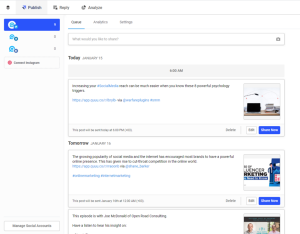— November 3, 2017

moritz320 / Pixabay
Expanding across borders has become one of the best ways for eCommerce business to pursue business growth.
As the global eCommerce landscape grows, sellers have access to a market that is predicted to grow to $ 130 billion by 2020.
Many sellers soon find that cross-border eCommerce is plagued by a myriad of legal and financial regulations. These regulations differ from country to country, meaning merchants must stay informed of the laws in the country they plan to export to.
In June 2015, the Brazilian government mandated that all imports must carry a label marked with a CPF. The CPF is an individual’s (i.e. your customer) tax ID number. Packages sent without a CPF are returned or destroyed; and the seller also gets fined by the Brazilian Customs.
This was a blow for eCommerce sellers, as we all know how hard it is to get customers to give up basic information in the first place. By adding the extra step of adding their tax ID, the Brazilian government seems to have made closing a sale harder.
But the CPF (and other data gathering issues) are only a few of the many hoops that cross-border sellers must conquer.
To some sellers, challenges like Customs fees, dealing with damaged goods and handling returns, are much more difficult to address.
Every country has its own regulations concerning imported goods. Customs agencies use the commodity type, quantity and other factors to determine duties & taxes charges.
These duties and taxes are based on a combination of product price, shipping costs and the product’s harmonization system (HS) code.
With the fees calculated, there are two options for paying them, either Delivery Duties Paid or Delivery Duties Unpaid.
By default, these fees are often passed on to the customers to pay the duties & taxes:
In using the DDU option, customers must pay the Customs charge due or they will not receive their package. Passing the extra charges to unsuspecting buyers may reduce your costs. But if they are not expecting any extra charge, they can also decline receipt of the package.
To avoid this, provide clear and visible instructions on the cost and timeframe of shipping goods to overseas customers. Your site can display a notice stating the taxes and Customs restrictions of the importing (customers) country.
In the case of a DDP, the merchant works out all Customs charges and offers an all-inclusive shipping cost, to the customer. This is also a double-edged sword, as charging too much will lead to cart abandonment. Charge too little and you’ll struggle to make a profit.
These fees used to be hard to calculate, but with the adoption of the HS code by almost every country, sellers can quickly see what shipping that thingamajig will cost.
To calculate the Customs charges required for the goods to be delivered to the customer, here are two accurate tools:
- The Duty Calculator by Pitney Bowes helps you determine a ballpark figure for any Customs fees.
- The UPS site has a more comprehensive tool to help merchants understand country-specific Customs rules.
The UPS site also offers great country-specific information to help you prepare for international selling.
For example, what merchants thinking of shipping baby quilts from a Chinese supplier to a buyer in Mexico, ought to consider.
Due to anti-dumping laws, certain goods must carry an original Certificate of Origin to verify that the commodity is not manufactured in China. Those that don’t will be hit with extra anti-dumping duties; which for that baby blanket, may be up to 379 % of the merchandise value!
Getting it wrong with Customs duties can lead to:
- Destruction or seizure of goods by Customs.
- Customer refusing to pay Customs charges, and possibly requesting a refund.
- Having to pay a fine to Customs.
- Losing money by under-charging for shipping.
Despite these hiccups, profitable cross-border eCommerce doesn’t have to be so difficult.
Knowing the cost of getting your products into the hands of international customers, can even help eCommerce sellers decide if a market is worth entering in the first place.
To maximize compliance and still satisfy their customers, eCommerce sellers should partner with a fulfillment provider that is familiar with international regulations and Customs fees.
If you are dazed by the complexities of VAT or stumped by the intricacies of Customs regulations of different countries, it’s time you had a chat with an experienced fulfillment provider.
Digital & Social Articles on Business 2 Community
(178)
Report Post






